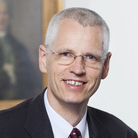Europe at 60: A German View

Holger Schmieding
Berenberg Bank
Dr Holger Schmieding is Chief Economist at Berenberg in London. Before joining Berenberg in October 2010, Holger worked as Chief Economist Europe at Merrill Lynch, Bank of America and Bank of America-Merrill Lynch in London. Having studied economics in Munich, London and Kiel, he holds a doctorate from the University of Kiel. Prior to this, he also worked as a journalist at Westfälische Nachrichten in Germany, as head of a research group on east-central Europe at the Kiel Institute of World Economics and as a desk economist at the International Monetary Fund in Washington, DC.
In the last sixty years, the institutionalized cooperation between sovereign nation states in Europe has been a major success. Underpinned by a U.S. commitment to the defense of Europe, European integration has delivered the longest period of peace and prosperity across most of Europe since the times of the Roman Empire. However, sixty years after the Treaty of Rome established the precursor to today’s European Union in 1957, four major forces are reshaping Europe.
- Success breeds complacency: If something works long enough, people take it for granted, tending to neglect the foundations on which their wellbeing rests. They feel bothered by the need to abide by some common rules for a common market and hemmed in rather than liberated by the opportunities that the free movement of labor grants them and their neighbors.
- From leaders to laggards: After strong growth in the 1960s and a still satisfactory performance until the early 1990s, most core European countries rested far too long on their previous laurels, allowing their labor markets to ossify as ever more regulations restrained the necessary flexibility to adjust to a changing world.
- More internal diversity, less of a unifying external threat: Until 1990, the communist threat had served as a potent reminder to western European countries why they needed to work together closely; the fall of communism in 1989 removed this external discipline. Instead, the welcome admission of many post-communist countries into the EU from 2004 onward turned it into a much bigger and more diverse club.
- The tide of anger: On both sides of the Atlantic, voters have been drawn to populists from the ultra-right and ultra-left of the political spectrum. The tide of anger seems to be a response to rapid structural and technological change, to immigration and other perceived indignities of globalization, and a protest against the pain of fiscal repair after the great financial crisis of 2008-2009.
The rise of populism is similar in the U.S. (Donald Trump) and Europe (Marine Le Pen, Beppe Grillo), and we find it inside the Eurozone (The Finns Party) and outside (Sweden Democrats). In Europe, however, the damage that populists could do is greater than in the U.S. As a club of sovereign nations, the EU is easier to break than a nation state.
The EU has already adjusted to these forces of change to a significant extent. The EU is no longer the largely uniform club of initially six and later fifteen countries with the same rules and obligations for every member. Instead, it has evolved more into a club of clubs. Nineteen of its now twenty-eight members share a currency (the euro). Most countries, but not, all have ceased to control passports and freight documents at internal borders in normal times (Schengen).
Beyond these changes on the EU level, individual EU members have tried to tackle their domestic deficiencies. Following the 2004 reforms that turned Germany from the erstwhile “sick man of Europe” into the continent’s new growth engine, Spain, Ireland, Portugal, and Cyprus followed suit with their own pro-growth reforms in the years 2012-2014 under the pressure of the euro confidence crisis. Even France and Italy have started to make some progress since 2015.
We expect the EU to turn ever more into a club of clubs with a limited number of common rules for all and the freedom to form sub-groups on other aspects of policy. The end result could be a much more varied Europe. Almost all European countries would be members of an EU that upholds the common market as well as the rule of law. Some countries would remain virtual members of this EU without having joined officially (Norway, Switzerland), enjoying almost all of the advantages of the common market while paying into the EU budget. A few further countries could form an outer ring with only partial market access (Turkey or a post-Brexit UK?).
At the moment, the fate of the European project now hangs in the balance. If a radical anti-EU populist from the political right (Marine Le Pen) or the left (Jean-Luc Melenchon) wins the French presidential election on May 7, progress in Europe would likely stall for a while amid considerable confusion, with a tail risk that France may actually leave the EU and/or the euro. However, if one of the two key reformers, Emmanuel Macron or François Fillon, prevails instead, we should expect a Franco-German initiative to strengthen the cohesion of the EU and the Eurozone later this year. Over the next five years, modest economic growth with continuing gains in employment and income could then take the edge off the populist tide, allowing the EU to thrive again in a modified form. That is our base case. In a way, the experience of the U.S., where a most unusual president seems to be gradually drifting toward the mainstream as he is facing political realities, supports our hope that the EU will overcome its own populist challenges over time.









